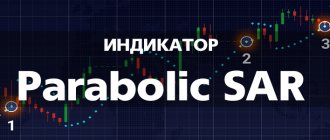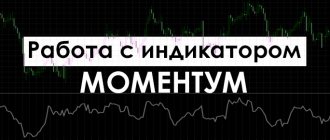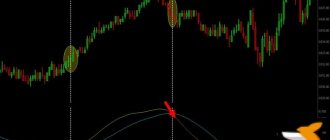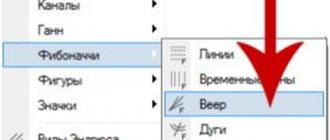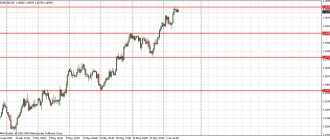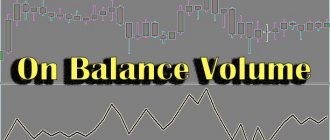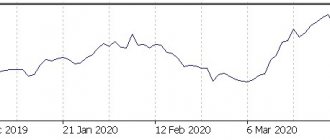The Watl indicator is designed to automatically mark a chart in accordance with the rules of the Elliott wave theory. This tool can be used when trading using various strategies - trend, scalping, counter-trend and so on. This is one of the universal algorithms that works with both currency pairs and any other assets.
The theory behind Elliott waves
Unlike most technical analysis indicators, Elliott Wave indicators are not used to measure trend. It measures the extent of price movements and examines the psychology of a trend. In other words, the indicator for the Elliott wave theory is designed to predict to what values and for how long the current trend can continue.
The basic Elliott Wave theory behind the indicators begins with the understanding that all traders, investors and other market participants behave as one large crowd or herd. Each of them has emotions that he tries to hide from the market, however, if everyone behaves the same, one collective mind is created. Therefore, Elliott wave indicators measure the impact of a trend on traders' emotions and current market sentiment.
Conclusion
Each of these indicators solves the problem of finding Wolfe waves to some extent, but none of them solves it completely. Even if we do not take into account pure subjectivity, the appearance of the figure is still ultimately influenced by a large set of factors. In the real market, it is rare to achieve the ideal figure, which is why goals are often too optimistic. To solve this problem, traders draw additional targets by drawing lines along adjacent extremes, or introduce trailing stops. But, despite the fact that none of these indicators is intended for independent use, in each of the developments you can find a unique idea, on the basis of which you can learn to determine Wolfe waves yourself.
History of the Elliott Wave Theory
It all started in 1930, when a professional accountant named Ralph Nelson Elliott discovered social patterns that had a major impact on the capital market. He then developed analytical tools that reflected the previously noted collective behavior. In 1938, the book “The Wave Principle” was published. This book explains herd behavior and the impact of crowd psychology on financial markets. The following year, Eliot's theory was explained in more detail and clearly in articles published in the World Financial newspaper. After seven years of work and market research, Elliott published his major work, The Law of Nature. The Secret of the Universe”, in which he described all his discoveries. Based on the book, a system of wave theories and Elliott wave principles was built.
By the way, in the future, Glenn Neely, a mathematician and analyst, created his own strategy based on the Elliott wave theory, which you can read about in the book “Mastery of Elliott Wave Analysis”
Elliot Wave Oscillator
It is no secret that Forex often moves in a trend, while being a very unstable market. In addition, traders know that on Forex you can play either downward or upward. This is why it is important to identify the underlying trend. The Elliot Wave indicator allows you to predict the future trend of the foreign exchange market, as well as its range.
In previous years, the foreign exchange market was reserved only for financial institutions and large businesses. The Eliot Waves Oscillator indicator was originally developed for the stock market. In the past, even financial institutions did not speculate in the foreign exchange market. That's why this Elliott Wave indicator was tested on stocks. However, it is much easier to open short positions in the foreign exchange market and that is why the EW indicator has gained great popularity. Let's see how it works.
The name of the Elliot Wave indicator comes from its creator, Ralph Elliot, who noticed that after one upward or downward impulse, a correction always occurs in the market. This rule can be applied to any time interval on the chart. According to Elliott, each trend consists of 5 waves, three impulse waves and two corrective waves. Eliot waves 1,3,5 are impulse waves, Eliot waves 2 and 4 are corrections of the previous impulse. In a bear market, we have three downward Eliot waves and two upward (corrective) waves; in the case of a bull market, the opposite is true.
Elliott Wave Oscillator differs from other Elliott wave indicators in that it does not draw waves or other lines on the chart. It has the appearance of a histogram, which is similar to MACD. In the Elliott Wave Oscillator settings, you can only change the colors and thickness of the lines; Unfortunately, it will not be possible to influence the algorithm.
This is what the chart looks like with the indicator installed
How to work with a histogram:
- when the indicator crosses the 0 mark, the waves must be counted again
- The size of the histogram column depends on the wave number. The biggest reading is the third wave. A divergence should form between wave 3 and I.
Opening trades in the Sweet zone WolfeWavesFind
The main signals are related to entering the market in the yellow zone and exiting when the goal is reached. The yellow zone is also called the “Sweet zone” or “tasty zone”. It received this name because at this point a trader can open the most profitable deal.
The “sweet” yellow zone can be processed one or more times. In this case, the first signal is always stronger (entry to sell or buy). For example, in the example shown below, it is clear that it was the first yellow zone that worked 100%, while after the second the price movement stalled.
The opposite situation is a buy entry.
Sometimes the price breaks through the sweet zone. This may occur under the influence of the release of important economic news or other factors. Therefore, it is important to always trade with a stop loss. It is set several points from the nearest maximum or minimum price value (depending on the direction of the transaction).
Attention! The indicator processes signals well not only on Forex, but also on other markets. For example, below is a pattern formed on the coffee futures price chart.
Elliott wave indicator WATL (Wave Auto Trend Lines)
This is a useful indicator that places wave numbers on the chart (focusing on lows and highs), and also draws trend lines. This Elliott wave indicator is considered by many traders to be one of the best, as it gives good signals.
This is what the chart looks like after installing the WALT indicator on it.
Walt is an indicator that will itself determine the following wave components:
- extreme points, which indicate the peaks of the wave and look like circles with numbers inside;
- lines connecting points “with circles”;
- trend lines (indicated by a pink line), which will show where the price will be after a certain time period.
You can use the WALT wave indicator on any time intervals, but, of course, the older the timeframe, the more reliable the signal.
Indicator settings:
Most of the settings of this indicator are responsible for its appearance on the chart, without in any way affecting the operation of the indicator. If you do not have much experience in analyzing charts using wave analysis, then it is better not to change the settings - they are universal and suitable for all time intervals.
The Walt indicator can be used not only in trading using the wave analysis method, but also simply as a tool for drawing trend lines on a chart.
If you want to use it to identify Elliott waves, wait until the chart shows a pattern like this:
Next, watch how the wave forms. After Walt draws a trend projection line on the chart, keep an eye on where it points. You need to open trades in the same direction as the trend projection line shows. That is, if it is up, then we buy, if it is down, we sell. Stop loss should be placed near the opposite extreme. If you enter into purchases, place a stop near the nearest minimum. If it’s on sale, it’s around the maximum.
Entering purchases using a bullish pattern
Before we begin to directly consider the Wolfe Wave indicators, which you can download for free from our repository, let us remind you what the patterns look like and how to use them. The screenshot below shows an example of a bullish formation and a description of its rules.
So, the wave marking must comply with the following rules:
- First, a new minimum appears, indicating the 1st reference point of the model.
- Then a new maximum appears at point 2.
- Next, a new minimum is formed, indicating point 3, which is necessarily below point 1.
- Then comes the appearance of a new maximum (point 4), which is lower than the previous one (point 2).
- Then you should expect the appearance of point number 5, which represents a new minimum, located approximately on the line drawn through 1-3.
This last point signals the possibility of entering into purchases. Here you can enter well, with a low probability of further decline and good potential for holding a long position. The target for holding will be point 6, and to find it, you need to draw a straight line through 1-4.
Elliott wave theory in the Forex market
Elliott waves are used to measure the psychology of players by showing us psychological levels in the market and extreme levels at which a trend change or correction is very likely to end. It is worth saying that Elliott's Theory has both many supporters and many critics.
Eliot waves and their types
As mentioned above, there are several types of waves. Eliot's first wave is one of the most difficult to observe because it is with this wave that the entire cycle begins. This wave may be more noticeable to traders familiar with fundamental analysis, while technical analysis enthusiasts may have trouble drawing the first wave due to the use of other indicators.
The second wave is a correction of the first upward impulse. This wave is created because some players believe that there is still a continuation of the old trend. The size of this wave is never equal to the size of the movement of the first wave. Usually, it does not exceed 61.8% of the first wave.
The third Elliott wave is considered the longest impulsive wave in the entire movement. Some emphasize that the fifth wave is the most powerful, not the third. The third wave is the easiest to see. This is where most players see the trend changing and want to get in on it.
The fourth wave is similar to the second, i.e. it is a correction of the third wave, but its size should not exceed 38.2% of the third wave.
The fifth wave is the last impulse in this trend. Historically, this is also the last chance for players to connect to the main trend and profit from the market in accordance with the principle of “the trend is your friend.” This is a wave that lifts quotes to a new peak or new low.
Correction can be carried out in three ways. Using ABC wave. Unfortunately, corrections are much more difficult to determine. Basically, when the market corrects, volatility and transaction volume increase.
Criticism of Elliott wave theory
It must be remembered that the Elliott Wave Theory is just that, a theory. Nothing has been scientifically proven and therefore it should be understood that the Elliott Theory does not have to be your only trading strategy. Elliott Wave indicators can be combined with other indicators or included as part of your trading system. When it comes to analyzing mass thinking, Elliot Waves are great in practice. Predicting the next upward or downward impulse can be difficult because in the foreign exchange market, most of the turnover is created by financial institutions, and therefore the mindset of financial institutions is stronger than the mindset of the crowd.
If you want to test how Elliott Wave theory works in practice, open a ]]>demo account]]>. It is thanks to him that you can test various Forex strategies without losing your money. ]]>A demo account]]> will allow you to see in practice whether the Elliott Wave indicator is the right tool for you.
